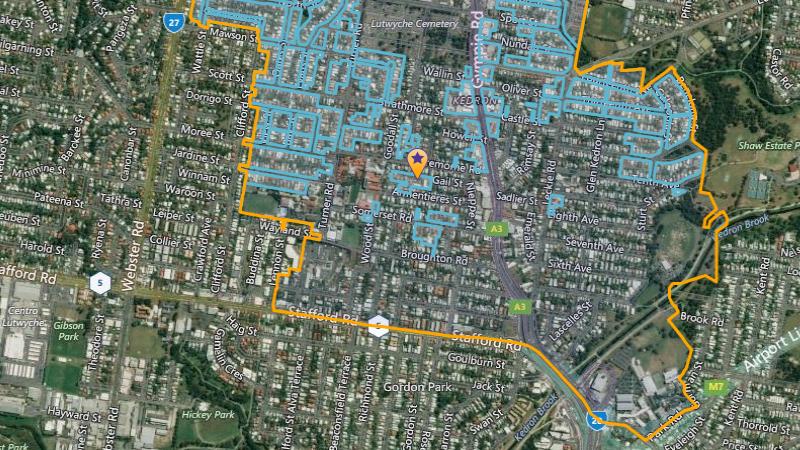If you’re wanting to subdivide, build townhouses, unit blocks or really anything in the property development realm, you need to understand what zone and council you’ll be dealing with first to know what is and isn’t possible/profitable.
Zoning is the way that council control what can and can’t be built, so that we can maintain sustainable population growth (predicted to double in the next 10 years). It is essentially a colour by numbers for property developers, but can become complicated very quickly. There are 517 councils across Australia – currently the only state that has standardised zoning codes is NSW. Otherwise, you’re looking at thousands of different codes across the country.
At a high-level, zoning falls into the following categories:
- Residential
- Commerical
- Industrial
- Mixed-Use
- Agricultural
- Public-Use
To make things easier, we use the Stash property developer software platform to show zoning examples across Australia.
You can sign up here to use Stash and find the corresponding zone and LGA for a single property, or search for properties within a specific zone (like low~medium residential for town houses) in any state in Oz.
Codes Broken down by State
NSW (New South Wales)
As mentioned before, NSW is the golden child with their standardised zoning LEP. The most relevant/popular codes would be:
- R1 – General Residential
- R2 – Low Density Residential
- R3 – Medium Density Residential
- R4 – High Density Residential
- R5 – Large Lot (Rural) Residential
- B4 – Mixed Use
You can use Stash or the NSW website to find out more detailed zoning and LGA information for a single property. Stash can go a step further and just search for a particular zone in a certain suburb, like R2 within Woolloongong.
QLD (Queensland)
I love our state (I’m true blue Queenslander), but don’t overly love the difference in codes (particularly sub-codes for places like Moreton Bay and Logan).
Brisbane City Council have a half decent mapping tool (PDOnline) to break down the codes in the Brisbane City area.
There are a whopping 77 LGAs (local government areas) in QLD. We won’t have enough mental capacity to outline these in detail here, but we’d recommend using Stash to help you return zones relevant to you for a particular suburb, or return the zone and LGA where a single property will be located.
VIC (Victoria)
Victorian councils went through a bit of an overhaul recently, moving around zones, cutting and adding a fair few. Thankfully, Stash is fully up to date with councils so you won’t need to worry too much about the exact details of these changes – just use the search function and let the magic happen.
However, the most relevant zones you should be looking at in Victoria suburbs should be:
- RGZ – Residential Growth Zone
- GRZ – General Residential Zone
- NRZ – Neighbourhood Residential Zone
- C1Z – Commercial 1 Zone
- C2Z – Commercial 2 Zone
- LDRZ – Low Density Residential Zone
- MUZ – Mixed Use Zone
- TZ – Township Zone
- RLZ – Rural Living Zone
WA (Western Australia)
WA designed a deeper metric logic around their codes. Termed R-Codes, these codes will generally indicate the density of properties that are permitted per hectare of land.
For example, R30 would allow for 30 dwellings per hectare, R40 for 40 dwellings per hectare, R60 for 60, etc.
You can see this in action when you search Shenton Park, a hot property dev suburb in WA. This will give you a good indication for the most appropriate zone for townhouses, unit blocks and subdivision.

SA (South Australia)
Unfortunately, SA is in the same boat as QLD in terms of not having a fully unified front on zoning codes. Though, there is a general logic of codes and the main categories mentioned earlier (such as SAL/R – Residential and SAL/C – Commercial).
They have a fair few LGAs, so we’d recommend using Stash to find the particular zone and LGA you’re interested in based on suburb or a particular property.
Alternatively, the SA Government have their own mapping tool, but its a little clunky / slow from our perspective.
ACT (Australia Capital Territory)
We don’t mind ACT’s code logic – it’s fairly clear how they split their categories.
The most relevant for smaller~medium development would be the following residential zones:
- RZ1 – Suburban Zone
- RZ2 – Suburban Core Zone
- RZ3 – Urban Residential Zone
- RZ4 – Medium Density Residential Zone
- RZ5 – High Density Residential Zone
NT (Northern Territory)
There are a LOT of codes in the NT. Which we don’t mind – Stash can handle all of the codes and zones. Just pick a suburb or a single property, and off you go.
Though, the zones you may find most of interest will be:
- SD – Single Dwelling Residential
- MD – Multiple Dwelling Residential
- MR – Medium Density Residential
- HR – High Density Residential
- RR – Rural Residential
- RL – Rural Living
- FD – Future Development
- CB – Central Business (permits some residential development
Want more information on council zoning? Consult your local Town Planner, or drop us a line by clicking this email link.
This is the first article in a multi-part series designed to give people who are getting into the property development market a broad and tailored overview of Australian council zoning codes.



